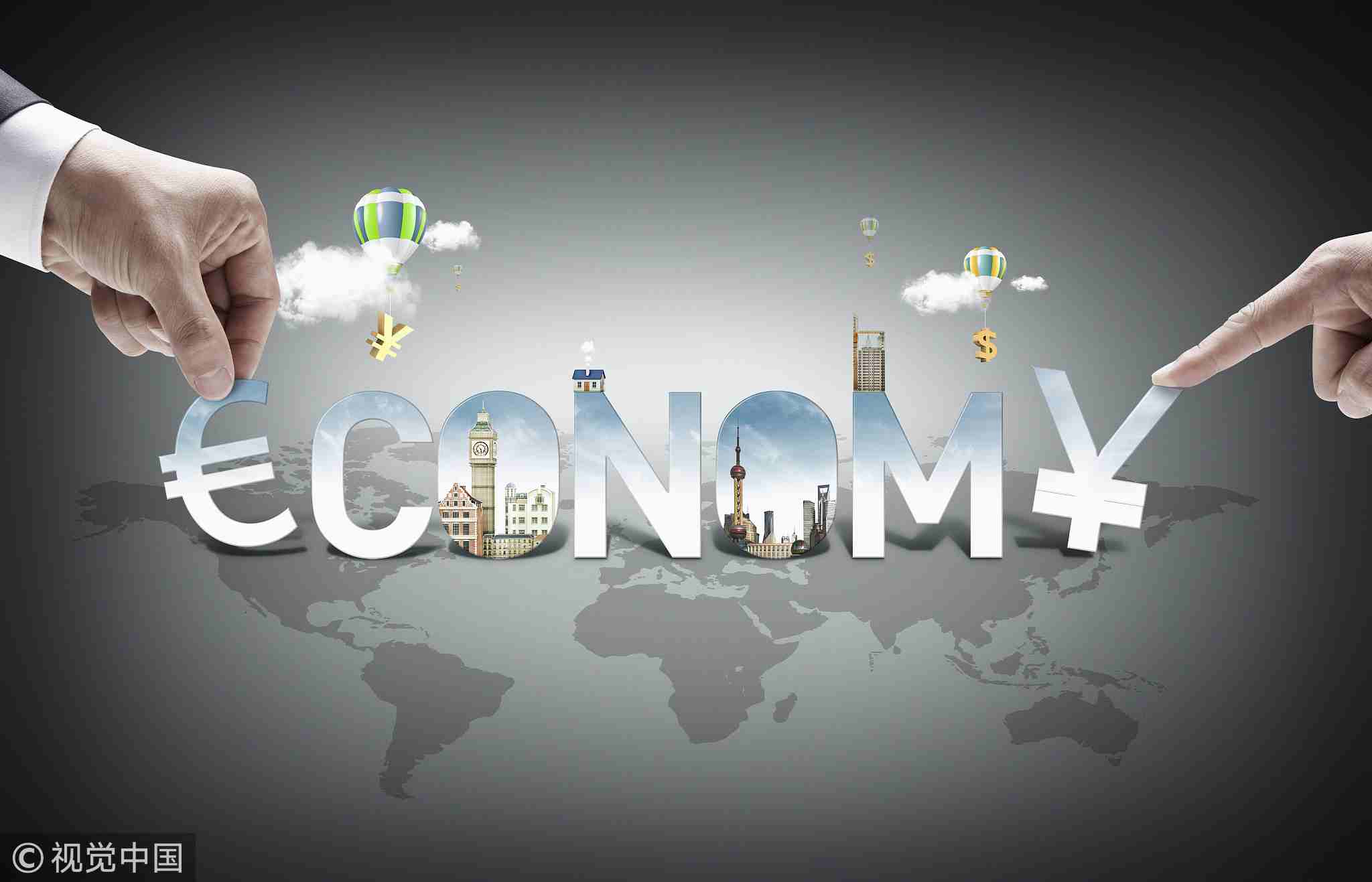
Opinions
18:06, 26-Dec-2018
Opinion: Badmouthing Chinese economy doesn't work. We explain why! (II)
Updated
17:10, 29-Dec-2018
Feng Da Hsuan and Liang Haiming

Editor's note: With 2018 drawing to a close, it is time to review the challenges and opportunities for China's economy throughout the year. In the first part, Feng Da Hsuan, chief adviser to the China Silk Road iValley Research Institute and former vice president for research at the University of Texas at Dallas, and Liang Haiming, chairman of the China Silk Road iValley Research Institute and a visiting scholar at Princeton University, share their insights on the effects of badmouthing the economy with CGTN. And in this part, they will focus on the influences of GDP slowdowns on our everyday lives.
Undoubtedly, the Chinese economy is currently at a difficult stage and there is no need to disguise this fact. However, it is believed that Chinese people need not be overly concerned about the temporary cold current on Chinese economy, considering the following two points.
First, the Chinese government is diligent in ensuring China's 6 percent GDP growth rate in 2019 and stabilizing the job market.
Whenever the pressure of China's economic downturn increases, the Chinese government will launch a series of policy combinations such as loosening the currency, broadening finance, expanding infrastructures, and cutting taxes to maintain a robust economy. As for the monetary policy, the Chinese government will certainly maintain a flexible monetary policy and offer tactics such as directional and non-directed reductions of the deposit reserve ratio, and even interest rate cuts.
It is expected that sometime in February next year, before the Spring Festival, there will be a lowering of the deposit reserve ratio in order to help the economy.
In terms of the employment market which obviously is what people are most concerned about, China's economic aggregate has expanded and the proportion of services in GDP has also risen. There is data manifesting that states that every time there is a one percent increase, the number of people employed by the Chinese economy rises from what it was 10 years ago.
Therefore, it is incumbent on the Chinese government to find ways to ensure that the GDP growth rate in 2019 is around 6 percent or more in order to meet the demands of more than 15 million people in search of jobs in China annually.
Beyond the fact of the Chinese government's proactive efforts to ensure job stability, there have been some new changes in the global job market, including those in China.

VCG Photo
VCG Photo
According to the latest report of the Swiss banking giant UBS, the global unemployment rate in September this year was 5.2 percent, which has fallen to an all-time low in 40 years. China's urban registered unemployment rate at the end of the third quarter was 3.82 percent, which also fell to an all-time low in recent years.
This data is contrary to the popular saying in recent years that robots will replace humans. The reason is that banks' low interest rates have rendered small- and medium-sized enterprises to be able to obtain more cheap funds for development, and the reduction of workers' salaries means that enterprises can hire more people.
The employment and the decline in the global workforce have alleviated the pressure on the job market. For example, the labor force in Central and Eastern Europe is shrinking by about 1 percent per year, while the Chinese labor force has already peaked.
As far as the Chinese market is concerned, the above-mentioned situation and new changes mean that the number of jobs available is still greater than the seekers. In fact, there is an embarrassing situation in which some jobs lack workers. What is more intriguing is that no matter how good a year the economy is in, there always will be some industries not going to do well.
On the contrary, even in difficult years, there will be some industries which will boom. In that paradigm, Chinese people need to position themselves into the ideal position, and not to be overly concerned about the country's economic growth rate. Ultimately, which is true for both workers in China and the U.S. is that they need to consider how to constantly acquire new knowledge and new ideas to enhance their competitiveness.
Second, the growth rate of GDP is a few percentage points or a few percentage points less, and has little relevance to the everyday lives of the ordinary people.
It is well known from the economic calendar that the GDP statistics method is a fairly recent invention. It was first published in the U.S. in 1930. At that time, it was mainly to assist then U.S. President Franklin Roosevelt to understand whether his New Deal could successfully mitigate the U.S. stock market falling by nearly 90 percent, and that 25 percent of the labor force was unemployed, thousands of banks closed and productivity fell sharply.

VCG Photo
VCG Photo
Since the GDP data was calculated by the government, the government included data mainly to determine expenses, evaluate the effectiveness of various programs, and ensure the stability of the system. It was not intended to inform the public about major issues related to their personal assets.
More importantly, after the U.S. GDP statistics method was formulated, many countries followed the suit and regarded GDP as the best indicator of whether a country's economy was sound, or not. But most of the countries at that time belonged to the labor-based industrial or agricultural economy, not the current service-oriented economy. This has led to the traditional methods of GDP statistics, which have been unable to grasp the changes in new labor productivity.
Moreover, no statistical method has been developed after the advent of computers and even the Internet, in which calculational efficiency is greatly enhanced. Unfortunately, this has not been reflected in the GDP statistics, especially for China, where the Internet economy has greatly flourished in recent years.
There is no denying that GDP statistical methodology has certainly a macroscopic significance for the government and investors. However, as long as a person's employment is stable, whether the GDP growth rate is a few percentage points more or less has neither positive nor negative implications.

VCG Photo
VCG Photo
In this regard, what is needed is to eliminate people's doubts about the economy. In the past few decades, economists have often been associated as a derogatory term.
This is because many people think that economics is simply too mathematical, hence too difficult to understand for people with no professional economic knowledge. In fact, some economists are too vague about economic and financial events, making the subject of economics to be ridiculed by the public.
In this regard, as the world's second largest economy, China may consider putting economics in the category of “common sense” courses. Every student enrolled in a university, regardless of the subject, must take an economics course in the freshman or sophomore stage. If conditions allow, economics can even be taught at high school levels.
In this way, the public can learn more about the truth about the economic and financial world, and push people to gain a different perspective and re-examine the economic crisis and predicament that has occurred, so as to make a preliminary judgment on the future development trend of the international economy and finance.
The term "Economics", originated from Greek, meaning family and house. The economy does not only include GDP growth, production, and development, which it was based on. The essence of economy is how to make the various species live in harmony and fill the space with upward mobility and development. It is definitely not just about GDP growth.
Moreover, in any long period of time, the high economic growth rate often hides the drawbacks and lays out the seeds of a huge crisis. On the contrary, every adjustment and slowdown in the economy is necessary for self-healing and growth, laying the foundation for higher quality growth. If we cannot walk through the trough, it is in all likelihood that we cannot climb the next higher mountain.
(If you want to contribute and have specific expertise, contact us at opinions@cgtn.com)

SITEMAP
Copyright © 2018 CGTN. Beijing ICP prepared NO.16065310-3
Copyright © 2018 CGTN. Beijing ICP prepared NO.16065310-3